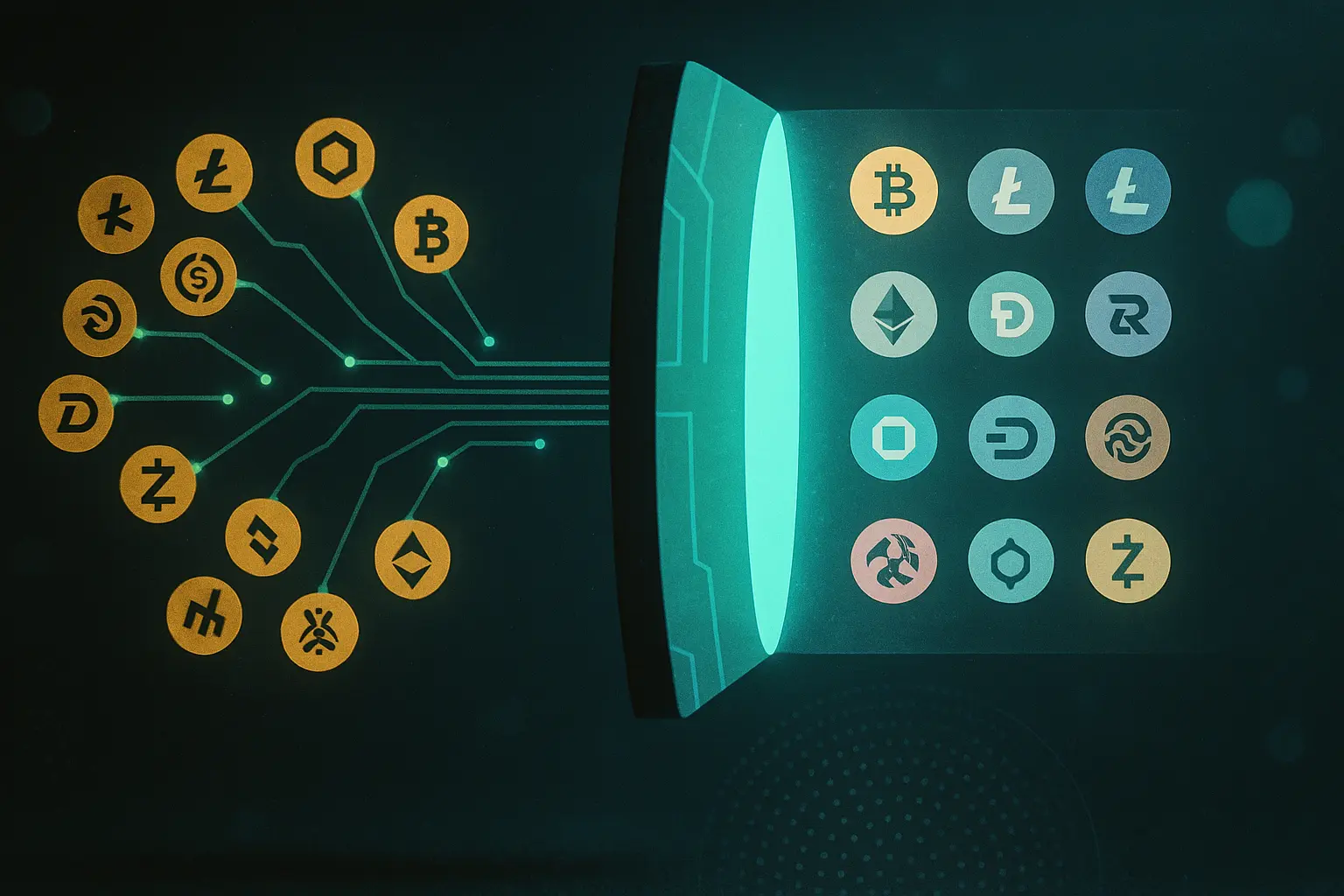What Is A Defi Aggregator And How Does It Work
A DeFi aggregator is like your personal DeFi assistant, pulling together multiple decentralized finance services into one user-friendly platform. Instead of juggling different decentralized exchanges (DEXs), lending protocols, or yield farming apps, you can trade, lend, borrow, and earn yields from a single interface. This simplifies your DeFi experience, making it more efficient and accessible.

Benefits of Using DeFi Aggregators
DeFi aggregators offer a range of advantages that make them a must-have for crypto enthusiasts like you:
- Convenience: Manage all your DeFi activities—trading, lending, and portfolio tracking—in one place, saving you time and effort.
- Optimized Prices: Aggregators scan multiple DEXs to find the best rates, ensuring you get the most value for your trades.
- Enhanced Liquidity: By pooling liquidity from various sources, they reduce slippage and improve trade execution.
- Security: Operating on blockchain technology, aggregators provide robust security compared to centralized exchanges.
- Gas Fee Management: Platforms like 1inch allow you to adjust gas fees or even offer refunds through staking their native tokens, helping you save on transaction costs.
How Do DeFi Aggregators Work?
DeFi aggregators function by connecting to multiple DeFi protocols and aggregating their data in real-time. When you initiate a trade, the aggregator uses smart algorithms to scan various DEXs, like Uniswap or SushiSwap, to find the best price. It may split your trade across multiple liquidity pools to minimize slippage and maximize returns. This process, known as smart order routing, happens in seconds, making your trades faster and more cost-effective.
Functionality of DeFi Aggregators
Data Aggregation & Comparison
You can rely on DeFi aggregators to scan multiple decentralized exchanges (DEXs), liquidity pools, and lending protocols to find the best rates for your swaps, yields, or loans. They compare fees, slippage, and liquidity depth in real-time, ensuring you make cost-efficient trades.
Automated Execution
With smart contracts, you can batch transactions, route trades optimally, and auto-reinvest yields (like auto-compounding) without lifting a finger. You can also execute complex strategies, such as arbitrage or portfolio rebalancing, without needing to intervene manually.
Risk & Cost Mitigation
To minimize slippage, aggregators split your large orders across multiple liquidity sources. You’ll save on gas fees through efficient transaction routing, especially on low-fee networks like Solana. Plus, by diversifying your funds across protocols, you lower your exposure to risks tied to a single platform.
User Experience Enhancement
You get a unified interface that makes swapping, lending, and yield farming a breeze. Aggregators also let you mimic the strategies of successful traders without coding, so you can follow proven approaches with ease.
DEX Aggregators vs Traditional DEXs
Traditional DEXs, such as Uniswap or Curve, let you trade directly on their platforms using their liquidity pools. While they offer decentralization and control, they may not always provide the best prices or liquidity. DEX aggregators, on the other hand, connect to multiple DEXs, offering you
- Better Prices: By comparing rates across platforms, aggregators ensure you get the best deal.
- Increased Liquidity: Access to combined liquidity pools reduces slippage, especially for large trades.
- Simplified Experience: You don’t need to manually check each DEX, as the aggregator handles it for you.
For example, a trade on Uniswap might have a 0.3% fee, but 1inch could split your trade across Uniswap and SushiSwap to get a better rate, potentially saving you money.
Use Cases for Traders, Yield Farmers, and Arbitrageurs
DeFi aggregators cater to a variety of users, making them versatile tools:
- Traders: You can use dex aggregators to secure the best prices on token swaps, reducing slippage and fees. For instance, swapping ETH for USDC on 1inch can be 10% cheaper than on Uniswap alone.
- Yield Farmers: Yield aggregators like Yearn Finance automate the process of moving your funds to high-yield opportunities, such as lending on Aave or farming on Curve, maximizing your returns with minimal effort.
- Arbitrageurs: Aggregators help you spot price discrepancies across DEXs and execute arbitrage trades quickly, capitalizing on market inefficiencies.
These use cases make DeFi aggregators essential for both casual and advanced DeFi users.
Risks and Limitations of Using Aggregators
While DeFi aggregators are powerful, they come with risks you should be aware of:
- Gas Fees and DeFi Aggregators: Transactions on blockchains like Ethereum can incur high gas fees, especially during network congestion. For example, Ethereum gas fees can spike to 80 GWEI or more. Platforms like 1inch let you adjust fees (market, aggressive, or custom) and offer gas refunds through staking 1INCH tokens, potentially saving you up to 40%.
- Smart Contract Vulnerabilities: Aggregators rely on smart contracts, which can be exploited if not properly audited. For instance, the PolyNetwork hack in 2021 resulted in a $611 million loss.
- Centralization Concerns: Some aggregators may have centralized components, posing risks of censorship or failure.
To mitigate these, choose platforms with audited contracts and transparent operations.
How to Use a DeFi Aggregator Step-by-Step
Ready to try a DeFi aggregator?
Connect Your Wallet: Visit any platform and connect your crypto wallet, like MetaMask or Trust Wallet.
Select Tokens: Choose the token you want to swap (e.g., ETH) and the token you want to receive (e.g., USDC).
Adjust Settings: Set slippage tolerance (usually 0.5–1%) and gas fees. For small trades, stick with the “market” gas setting for cost efficiency.
Review and Confirm: Check the transaction details, including the estimated gas fee, and confirm the swap. Your tokens will be swapped at the best available rate.
Multi-chain Aggregators and the Future of Cross-Chain Trading
In 2025, DeFi is expanding beyond Ethereum to blockchains like Solana, Avalanche, and BNB Chain. Multi-chain aggregators are key to this evolution, enabling you to trade and manage assets across different networks seamlessly. For example, 1inch supports over 12 blockchains, making cross-chain swaps as easy as single-chain trades. Recent trends show cross-chain interoperability as a major focus, with platforms like Paraswap leading the way.
Looking ahead, expect more seamless cross-chain transactions, AI-driven yield optimization, and integration with traditional finance, making DeFi more accessible and efficient for you.
Conclusion
DeFi aggregators are your gateway to smarter, more efficient DeFi trading in 2025. They simplify your experience, optimize prices, and help you manage gas fees, all while offering access to vast liquidity pools. Whether you’re a trader, yield farmer, or arbitrageur, Some platforms have tools to suit your needs. Just stay mindful of gas fees and security risks, and choose reputable platforms with audited contracts.
With the rise of multi-chain aggregators, the future of DeFi is bright, offering you more flexibility and opportunities.

